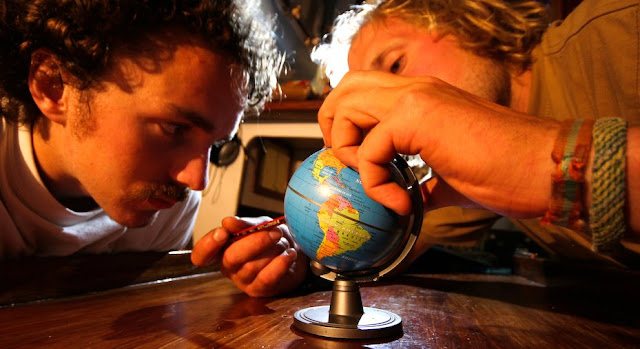SKIPET
Liberty heter båten vår. Hun er en gammel glassfiber-dame som fyller 50 år i år. Hun er tegnet av Wirth Munroe og bygd I USA I 1959 av Crystaliner. Modellnavnet er Arco 33. Hun er 33 fot, eller 10 meter, lang, største bredde er 3 meter og hun stikker 1,5 meter dypt med senkekjølen oppe, 2,5 meter med kjølen nede. Hun er langkjølt og kutter-rigget, dvs. at vi har mulighet til å ha to forseil oppe samtidig.
Skroget er lagd i massivt glassfiber (ikke noe moderne sandwich-konstruksjon her i gården!) og er 28 mm tykt. Vi har ikke rullefokke-system på forstaget, som er veldig vanlig på moderne båter. Dette betyr at vi må fram på fordekket for å bytte seil, uansett vær. MEN det betyr også at det er én teknisk ting mindre som kan bryte sammen og bli ødelagt på båten.
Seilgarderoben består av, i tillegg til et splitter nytt storseil; genoa (original fra 1959!), jib, yankee, stormfokke og kryssfokke. Vi har også en gennaker som vi forhåpentligvis lærer oss å bruke en dag.
Annet utstyr seile-nerdene kan ha interesse av er 2 CQR anker (25 og 35 pund), et stokkanker, 45 meter ankerkjetting, elektrisk ankerspill, SSB radio, VHF, Yanmar 2 sylindret 18 HK motor (ny i '96), to-blads propell, Monitor vindror, Avon 6manns livflåte, Avon gummijolle, nødpeilesender. Vi har med oss 40 liter ferskvann i en fast tank foran i båten, 115 liter til i 5 plastdunker i aktre lasterom. To av sistnevnte kan kobles på ferskvannssystemet slik at vi vi har på det meste tilgang til 90 liter ferskvann «i krana». Vi har også 40 liter diesel på tank pluss 70 liter til på kanner. Dette er nok diesel til at vi kan gå for motor i ca. 5 dager i strekk.
Liberty har to køyer i forpiggen som kan lages om til en stor V-køye om det er behov. I kabinen kan vi brette ut sofaen til en til stor dobbelseng. Når vi går vakter til havs bruker vi helst stikkøya i kabinene. Matlaginga foregår på en gretten gasskomfyr med to bluss på toppen.
Liberty er en førstegenerasjons glassfiberbåt, og er utrolig solid bygget. Mye av det originale dekksutstyret i bronse er fremdeles der det ble montert for 50 år siden. Senkekjølen er også lagd av bronse. 200 kg. Av det.
Vi har absolutt tiltro til båten vår, og skulle vi bli nødt til å avbryte turen vår på noe tidspunkt er det neppe sannsynlig at det er BÅTENS feil.
 We are leaving. The forecast has spoken and the low pressure that has kept us one week too long in Whangarei is now heading off. Same goes for us.
We are leaving. The forecast has spoken and the low pressure that has kept us one week too long in Whangarei is now heading off. Same goes for us.






 Just to be safe.
Just to be safe.

















